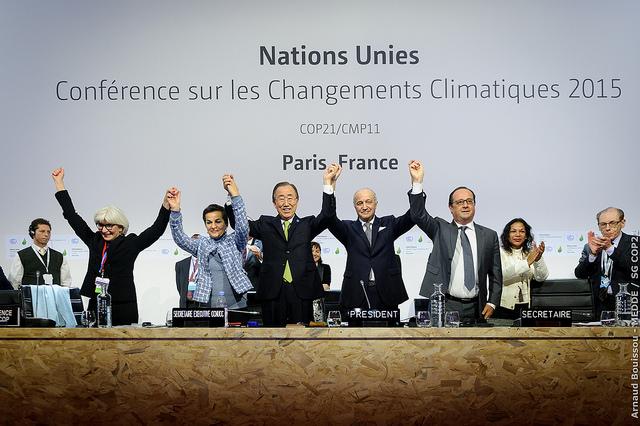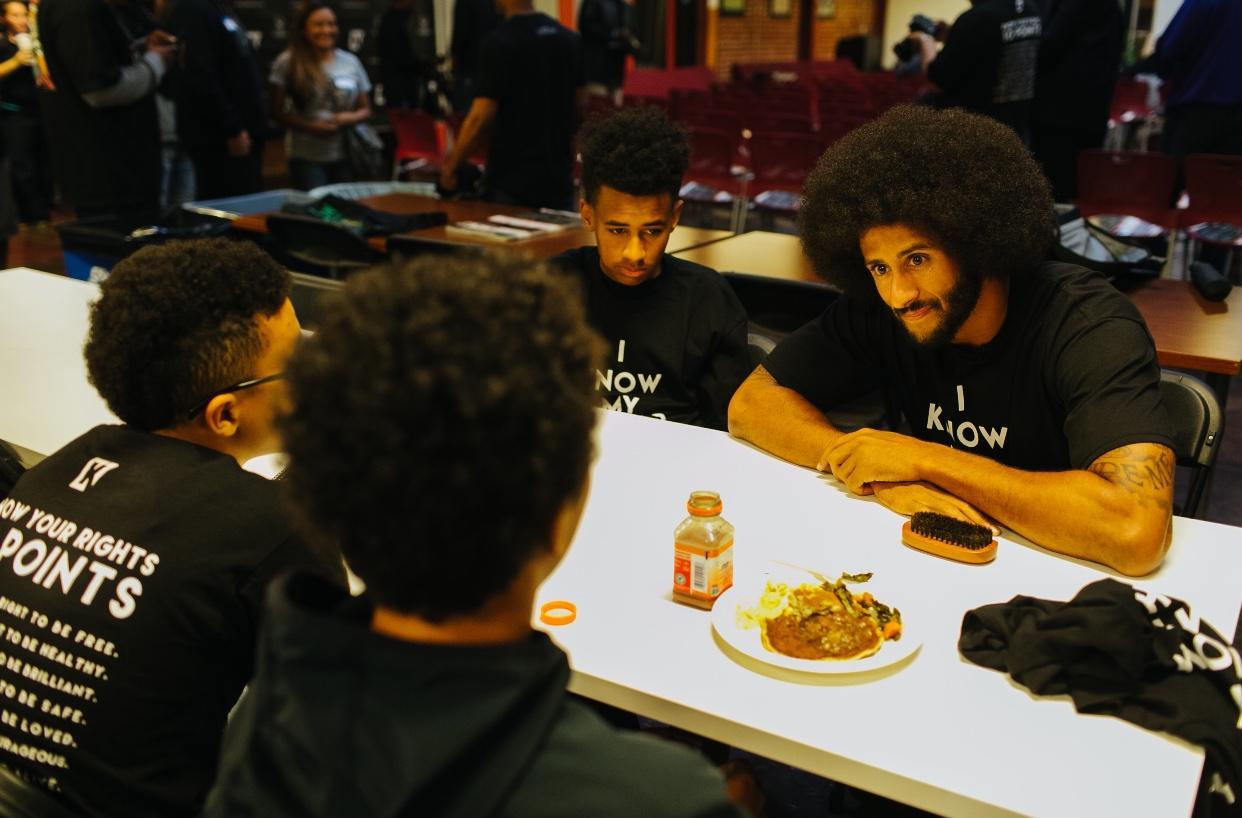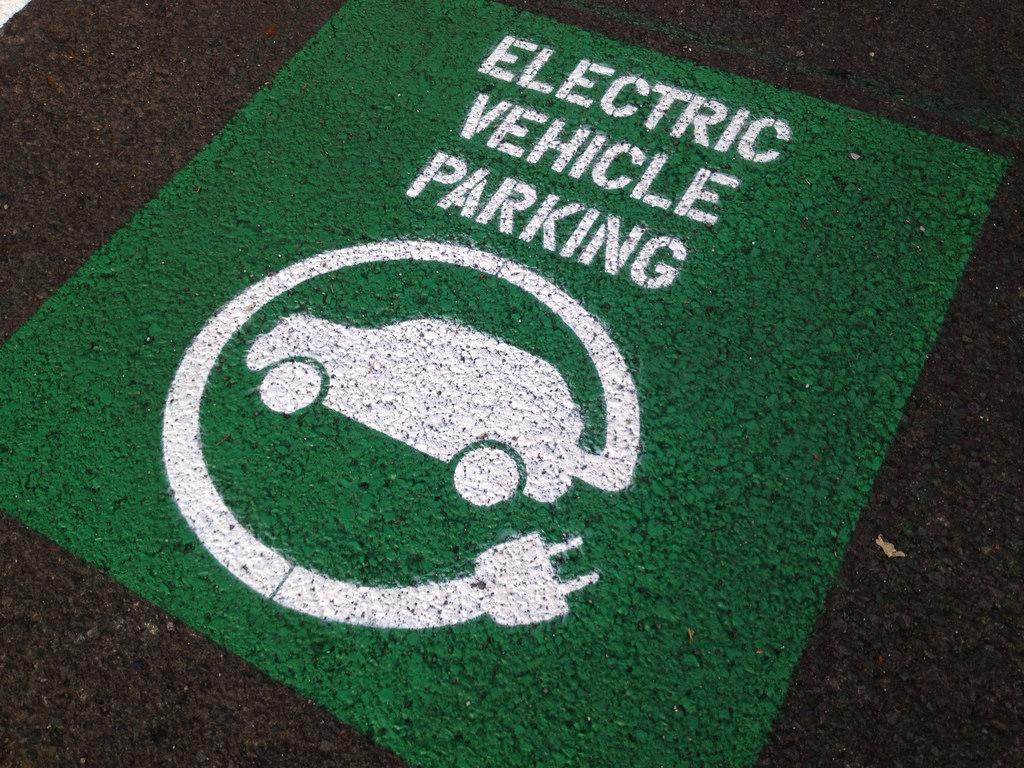Pro Bono Perspectives, the New Podcast Seeking to Inspire Social Impact


Common Impact, a nonprofit that pioneered corporate skills-based volunteering, is launching a new podcast – Pro Bono Perspectives. Hosted by CEO Danielle Holly, Pro Bono Perspectives is the latest in a series of Common Impact initiatives focused on showcasing the people, organizations and ideas that are shaping new models for purpose-driven work.
As millennials and Generation Z professionals are determined to make significant social impact through their careers, this workforce demographic shift offers an opportunity to rethink how corporate responsibility practitioners - or really, all and any professionals, for that matter - can engage at work and in their community to create sustainable positive change. Skills-based volunteerism is a growing engagement model that can bridge the professional development and community impact gap for the next generation of leaders.
“I am constantly inspired by the people who touch our work and help to make our communities better -- the nonprofit leaders who work tirelessly towards their missions, the corporate employees who pole jump over the standard ‘way of doing business’ and the cross-sector chameleons who are able to bring people from different backgrounds, experiences and values together,” said Common Impact CEO and Pro Bono Perspectives Podcast Host Danielle Holly. “Now, I have the chance to share the stories of the people who drive our work – and me – every day.”
Be sure to tune into the podcast series today, Tuesday, October 2, as our own Dave Armon will talk about next month's 3BL Forum and the brands taking stands movement that is transforming corporations' role in society.
TriplePundit recently caught up with Danielle Holly to learn more about this series.
3p: Who should listen to this podcast, and why?
DH: Pro Bono Perspectives was developed to inspire anyone interested in social impact. The podcast features interviews with everyday leaders from all backgrounds and provides an in-depth look at their career and how they apply their experiences to create a meaningful impact in their communities. In creating this podcast, our hope was to provide our listeners with real-life examples of how to navigate across sectors as well as build a career in social change work no matter their interests and skill sets. Pro Bono Perspectives examines the increasingly prevalent idea of a purpose-driven career and provides listeners with both inspiration and tactical next steps to be a change-maker in their own communities.
3p: What are you hearing from corporate responsibility professionals out there?DH: We have all heard about the social conscious of millennials, and as this generation moves into leadership positions, we can see an increasing demand to create tangible, meaningful impact in their day-to-day work. They want their employer to take a stand on issues of social and environmental importance, give back to the communities in which it operates and involve them in the process. This trend appears to continue as Generation Z enters the workplace.
We are also continuing to see a real need for capacity building with nonprofits. Movements like the Full Cost Project reinforce the social sector’s need for infrastructure support. This creates a huge opportunity for skilled volunteerism. Research also indicates that there is growing corporate interest in skilled volunteerism with more than 50 percent of companies managing a formal skilled volunteer program. But along with the growth in demand come some challenges. Skilled volunteerism is something that works incredibly well when done right, but needs to be approached in a way that appreciates and fully utilizes the perspectives and skills of participants from both the corporate and nonprofit side of the partnership.
Common Impact has described the components of successful skilled volunteerism (a panoramic perspective, skill sharing and sticky relationships) through a concept we call The Knitting Factor. Our podcast conversations with cross-sector leaders and practitioners support this concept while also providing practical guidance for organizations and individuals who want to create meaningful change on a personal, professional and community level.
3p: What do you hope Common Impact can achieve with this podcast series in a year from now?DH: Our hope is that our listeners are able to take what they heard from our podcast guests and translate that into action in their own lives - whether that means finding a new passion for social impact, activating their inner 'intrapreneur' within a company, or becoming a change marker in their community on an issue that gets them out of bed in the morning. At Common Impact, we know first-hand how pro bono, when done right, can have a transformational impact on a nonprofit organization and their surrounding community. We hope that Pro Bono Perspectives demystifies pro bono work and brings it to life for people of all ages, backgrounds, and experiences - whether they are working at a large fortune 500 company or entrepreneurial nonprofit. We also hope to bring new voices to the conversation to help lower the barriers to entry for small to medium sized businesses and encourage people to feel empowered to get involved in purpose-driven work no matter where they are in their careers.
Future episodes will feature social impact leaders such today's podcast with Dave Armon; Rachel Hutchisson, VP Corporate Citizenship & Philanthropy at Blackbaud; and Colleen Olphert, Director of Membership and Member Services at the Boston College Center for Corporate Citizenship.Image credits: Common Impact
Sustainable Investing After the Paris Accords


In 2014, I was asked by the United Nations to spend a year helping the UN think through the Paris Climate Agreement and the Sustainable Development Goals (SDGs). That was a fantastic year, working with world leaders, working with the biggest CEOs of the world, and the largest asset owners, helping them to figure out how to solve this climate crisis from a sustainability perspective.
During the talks that led to the Paris Agreement, every major CEO of every major sector was there, or their firm was represented. And it wasn't just about risk. We needed to think about what happens if public policy changes, and we're no longer allowed to invest in coal or fossil fuels. The mindset was about opportunity. There are multi-trillion dollar prizes on the flip side if you can figure out the electric vehicle transition. If you can figure out the renewable energy transition, that's a multi-trillion dollar prize.
This is the big question for today. At a macro level, our sustainability and profits—can they actually coexist, or does one come at the expense of the other? The greatest story about sustainability over the last 20 years is the massive reduction in cost for low cost energy, for carbon offsets, and so on. So the question of whether you want to be sustainable or not is no longer a profit versus expense one—at least to the same level as it was before.
At the same time, one has to look at the risks involved. If you're a business that has a large potential carbon footprint, and if the world is actually going to be serious about a 2°C standard, as called for in the Paris Accords, that means that a lot of that carbon footprint is actually a huge liability.
So the Paris conference was extraordinary for a few reasons. One was the belief that we would actually do this. Secondly, and very importantly, was that the business and investor community was there They weren't there as a thorn in anyone's side, but they were there hand-in-hand with policymakers saying, okay, we're with you now, and we're going work together to make this happen. The feeling in the room was that we can get there, and that business and finance are with us to get there.
This change is going to be driven, as all transformations are, by the entrepreneurial spirit of individuals in the private sector. It's going to be created by a great technology or a great new financing vehicle or a great new financial institution that becomes the breakthrough.
It's a good sign. It shows the power of progress and the power of capitalism, the power of technologies—so all of that is positive, but then the question is, how do you actually implement that in a large way across a global economy?
I’ve advised governments and financial institutions on how they should think about the allocation of capital to the best businesses, and I boil it down to five points:
- Investors need to understand that there's a quiet revolution happening in sustainable finance. It's new data. It's new risk tools. It's new measurement. It's new disclosure policies. It's been happening for a while, and it's now taking off.
- Investors need to understand the risks that are involved with a two, potentially three or four degree Celsius climate change scenario, and there are risks that are very direct, i.e. stranded assets. If we actually take two degrees Celsius seriously, it means that trillions of dollars of market cap value for large oil and gas companies, for example, actually shouldn't exist because their assets will have to stay underground. They're stranded. Coastal real estate is a risk. Political upheaval is a risk. If you go to Saudi Arabia or Nigeria or Venezuela or Russia or the United States, large oil, fossil fuel producers, what does your economy look like in 50 years if you can't actually go and use carbon assets?
- This transition means opportunities: new businesses, new business models. It means old businesses looking at the world a little differently. It means old technological companies looking at the world differently as well as new technological companies engaging with the world. An investor should be thinking, how am I going to allocate capital profitably?
- This a global transition. You actually have to think about geography when you think about sustainability because there are certain parts of the world that are in the lead. And there are certain parts of the world that are going be hit the hardest from climate events. Sadly, the African continent that contributed the least to climate change will actually bear the largest brunt of it. So having a global perspective and thinking about the nuance of geography will matter a lot.
- You shouldn't be a purist when it comes to climate change or sustainability when you're allocating capital because there is a lot of nuance in this space. It could very well be the fact that large oil and gas companies become the leaders of the renewable energy transition. I'm a believer, personally, that it's more about engagement, that you should invest in these companies because they're large parts of the economy. They're how the energy system of the world operates today. You should ask Exxon, Chevron, Shell—what are you all doing to stay at two degrees Celsius? What is your plan? How are you contributing? That is a much more useful and thoughtful and I think, productive way that an allocator of capital should be operating as opposed to just divesting and letting somebody else deal with it.
This is a major transformation, a multi-decade transformation.
It’s now becoming a global phenomenon. Most of the large financial institutions, many of the large wealth managers, have built products, have built capabilities, and are talking about this, because clients are talking about it.
This revolution isn’t just a mandate or a dictate from governments or from the United Nations. This is coming from clients. We want our investments to keep these issues in mind because we know that this change is real, and we know that this is going to be one of those big transformations that our investments need to be mindful of.
Excerpted from the World Financial Podcast, a production of OppenheimerFunds.
Image credit: COP Paris/Flickr
Taking a Stand in Controversy: Should Brands Just Do It?


Former San Francisco 49ers quarterback Colin Kaepernick famously ‘took a knee’ during the US national anthem and flying of the flag before an NFL game in 2016 to protest against racism. Some people objected to what they saw as unpatriotic behavior, while others applauded, and followed, his protest.
Kaepernick said at the time ‘this is bigger than football’ and Nike’s decision to use him in the 30th anniversary celebrations of its ‘Just Do it’ campaign has had a similarly divisive affect on Americans. Since its launch, the #NikeBoycott hashtag is trending on Twitter with people sharing images of themselves destroying Nike products and others ridiculing such actions. However, online Nike sales are up 31 percent (1).
Just Do It
But does Nike, a sportswear brand, have a right to take a stand on racial injustice? Yes. Brands can and should be more political. They have huge influence, and thus an enormous opportunity to behave in a way that affects positive change. It’s a very difficult thing to do for large organizations, but making a choice about what they think is right and wrong is refreshing. What Nike is doing is picking a side. This is great. It’s also highly ambitious and is exactly the type of thing that brands should be doing more of for two reasons. Firstly, making a stand can help brands capture the attention of distracted consumers. But secondly, it’s also important in, and of itself, to make a stand on issues that matter.Brands, especially huge global ones such as Nike, have immense influence in today’s society. Although their raison d’être may be as a commercial entity, their position within our culture means they have the ability to steer global conversations and the power to sway opinion. Consumers also want brands to get involved. Sprout Social recently polled 1,000 Americans to ask them about this and 66 percent said that it is ‘important for brands to take public stands on social and political issues.’ (2)
Also, according to Edelman, half of the world’s population are making belief-led buying decisions, particularly in developing countries like China and India. ‘Consumers are putting their personal convictions front and centre. From the grocery aisle to the car dealership, they’re buying on belief. Willing or not, brands of all kinds and sizes are now navigating this new reality. And in a lightning-quick digital world, the rewards and risks are equally high.’ (3)
The critical thing about why this works for Nike - and a watchword for all purpose-led activity - is that it is relevant, and credible for its fans and substantiated by the way the brand behaves and operates. Nike has picked an issue that is important for its audience and, with a long heritage of using sportspeople and celebrities as brand ambassadors from a variety of backgrounds, it has the right to make a stand. When Tiger Woods, for example, turned professional, Nike launched the ‘Hello World’ campaign, in which Woods discussed racial discrimination in golf. The type of campaign which brands can authentically take their stand on will, and should, look very different because they must be a reflection of a brand’s unique heritage and the priorities of their specific audience.
The Kaepernick question
What’s interesting and different about Nike’s campaign is that it is adopting an individual’s cause, initiative and agenda, which is risky. It is risky because Nike is a brand, not a person. It has brand values, it has brand ethics, but can a corporate entity have morals, sentiment, and human experience? Brands that attempt to hold a mirror up to a sub-culture or movement are in danger of seeming inauthentic.That said, Kaepernick is a Nike athlete, someone that the brand has invested in and publicized for years. Building on the back of an individual’s popularity, appeal and opinion is also something brands do overtly - or in more subtle ways - every single day. Would George Clooney be such a great brand ambassador for Nespresso if he didn’t have values that the brand’s audience aligned with, as well as making the product feel more desirable through his own desirability?
In Kaepernick’s case, as an individual reflection of the brand’s values, Nike has always advocated the idea of commitment, pride, passion, taking a risk and following a path that is true to who you are. It has championed athletes, and often the specific challenges that they have faced in their careers as individuals, and through that connected to different audiences. This is contemporary brand marketing.
But there are still risks with corporate activism, even for a brand like Nike. This is where all the moving parts come into play to create a little genius. Nike is a brand that works strategically: it knows and understands the rules but is also prepared to go out on a limb a little, which it can only do because it stands firmly behind the principles at stake. It takes its own medicine.
Tomorrow, in the second part of our discussion on the Kaepernick Just Do it campaign, Ben Hayman explains in more detail just how much risk Nike took on and it managed this risk strategically.
Image credit: Know Your Rights/Facebook
Path to Purpose: What’s Your Organization’s Rallying Cry?


Establishing and operating from an anchor of a “living purpose” creates a distinct competitive advantage for companies and a mechanism to engage your stakeholders. For example, customers who are aligned with a company’s brand values deliver twice the share of wallet (47%) as customers who aren’t aligned with that same brand (23%) .
Articulating an inspiring, overarching purpose statement is an important first step in helping your purpose take hold. While it’s not enough on its own, it can be the connective tissue or jumping off point to clarify and integrate your organization’s values, cultural norms, and long-term strategy.
A stated purpose is a means to demonstrate your commitment to long-term value as well as short-term results. It ignites the passion in your people and engages your top talent, so they stay, grow, and thrive with you. And it can lead to innovations that will help you stay competitive in a rapidly changing marketplace.
Some companies choose to encompass purpose in their mission statements, others in their vision statements. What’s important is that you get at “the essence” of who you are and why you do what you do. BCG’s BrightHouse says: Mission is your what. Vision is your where. Purpose is your why.
Based on my work with CEOs and senior teams, here are five steps to help organizations through the process, including questions to reflect on along the way.
1) Start External
You won’t get there by working with your senior team alone. Capture the power of your company’s narrative as experienced through the eyes of your stakeholders. Customers, employees, and suppliers will all offer important insights on the distinct value you bring.List the people and the groups that matter to you and to your business. Determine who matters most to you and then find out what matters most to them.
Three Questions:
- What do our customers value about our organization?
- How would our employees describe working at our company?
- How would our partners describe our company to others?
2) Look Inside Yourself
To be a steward for your company you first must become conscious of your own purpose. This phase of the process is introspective. It’s about finding the connections between your head and heart that will then connect to the purpose of the business. Examine what is most important to you and your senior team. Discuss each of your own personal narratives and the legacy you hope you’re building. Reflect on how you want to shape your future path.An inspirational company purpose is always linked to a leader’s overall ambition of who they want to be as a person and how they hope to be remembered in the future.
Three Questions:
- What am I passionate about that I want to leave as my legacy as a leader?
- Why am I in this business, and what am I trying to build?
- What people do I deeply admire and why? How would I describe their purpose?
3) Find Your Noble Cause
This is the stage where you link external and internal to pinpoint your company’s single, overarching purpose. A purpose answers the “why” question and links vision, mission, strategy, values, and culture. It’s the organization’s single underlying objective that unifies all stakeholders and embodies its ultimate role in the world.Hewlett-Packard co-founder David Packard said way back in 1960, “I want to discuss why a company exists in the first place. In other words, why are we here? I think many people assume, wrongly, that a company exists simply to make money. While this is an important result of a company’s existence, we have to go deeper and find the real reasons for our being.”
Three Questions:
- What do we want to be known for?
- What is it that we can do for the world that other companies can’t?
- If we are successful, who will benefit and how?
Ikea: To create a better everyday life for the many people.
Ingram Micro: Realizing the power of technology.
Masonite: We help people walk through walls.
SAP: To help the world run better and improve people’s lives.
Sephora: We inspire fearlessness.
Starbucks: To inspire and nurture the human spirit—one person, one cup
and one neighborhood at a time.
Visa: We strive to be the best way to pay and be paid, for everyone, Everywhere.
4) Write It
You have a wealth of thinking behind your purpose. Now turn it into a statement that will be the broader framework for the actions you will take. It’s how your purpose will be expressed. My recommendation is that you put down every word or phrase you can think of. Then begin to boil these words and phrases down to what fits best, ultimately picking a single phrase that strikes at the heart of who you are.Fewer, bolder words are often better and more memorable. Make the statement aspirational. You want to engage people’s emotions and unlock their imaginations.
Three questions:
- Is the statement short and easily repeatable?
- Could any other company say this?
- Will it inspire and engage your stakeholders?
5) Test and Experiment
Finally, you’ll need to make sure the statement is clear and compelling to people across your entire value chain. Circle back to show your stakeholders what you have developed to see how it resonates. Be willing to fine tune based on what you learn. And then you can begin the work of linking everything you do back to this purpose statement and helping it take hold.Three Questions:
- Are people rallying around it and talking about it?
- Does it make people proud to be a part of your company?
- Can employees clearly connect their work to this statement?
Image credit: Chris McClanahan/Flickr
Bank of America Pledges to Help Make EVs the ‘New Normal’ by 2030


Bank of America has become the latest Fortune 500 company to join the EV100, a global initiative led by the Climate Group that seeks to make electric transportation “the new normal” by 2030.
The EV100 calls on companies to leverage their investment, as well as their influence on millions of staff and customers worldwide, to address rising global transport emissions. Two dozen members—including Unilever, Ikea and Clif Bar—have already pledged to purchase more electric vehicles for their fleets, install EV charging points for employees and customers, and invest in sustainable transport solutions.
As part of its membership, Bank of America committed to install additional EV charging infrastructure at its owned properties. The company has already installed around 100 workplace charging points for employees in the U.S. and U.K., with more planned in 2019. Additionally, nearly 10,000 employees have participated in its low-carbon vehicle reimbursement program—which the company established a decade ago to incentivize purchase of electric and hydrogen fuel cell vehicles.
The financial giant was also an early member of the RE100, another effort from the Climate Group and CDP that calls on companies to source 100 percent renewable energy. Such measures not only prevent climate-warming emissions, but also offer a business benefit: A 2018 progress report, which draws on data from 3,500 companies, revealed that RE100 members earn up to 7.7 percent more profits than non-members.
“Being energy-smart and being business-smart goes hand in hand and this has to be norm, sooner rather than later,” Helen Clarkson, CEO of the Climate Group, said in a statement. “We congratulate those going further and faster on climate action and we urge others to do the same—a win-win for emissions and the bottom line.”
Bank of America’s goal to purchase 100 percent renewable energy and be completely carbon neutral by 2020 is ambitious, even by RE100 standards. The company purchased 1.7 million megawatt-hours of renewable electricity in 2017, which amounts to 83 percent of its global energy use, putting it on track for its 2020 goal. It also cut its direct emissions and those from the purchase of electricity by 86 percent since 2010, while growing the business by 4 percent in the last fiscal year.
“In addition to taking measurable action to reduce our environmental impacts, we are also deploying significant financial and intellectual capital to develop solutions to climate change and other environmental challenges,” Alex Liftman, global environmental executive for Bank of America, said in a statement.
The company has invested more than $96 billion “in financing for low-carbon and sustainable business activities” since 2007, Liftman said. That includes nearly $30 billion in financing for renewables, transportation and water infrastructure projects deployed from 2013 to 2017 in the U.S. In September, the company commissioned a report to examine the impacts of that investment—which is part of a $125 billion environmental business commitment leading up to 2025.
The analysis, conducted by consulting firm EY, revealed that Bank of America’s investment contributed a cumulative $35.6 billion to America’s GDP, while helping to prevent more than 1.8 million metric tons of carbon equivalent emissions in 2017 alone.
“We are engaging every part of our company to address today’s biggest global challenges—including solutions to help transition to lower-carbon energy sources and address unsustainable demands on our natural resources,” Bank of America Vice Chairman Anne Finucane said in a statement.
In May, the company also announced the issuance of its fourth and largest green bond for $2.25 billion, the proceeds of which will support increasing renewable energy generation.
Image credit: Flickr/Ryan Ozawa
Agriculture: The Missing Piece of the Climate Puzzle


By 2050, countries around the world must find a way to produce more food than they have in the past 8,000 years to accommodate population growth—all while minimizing the agricultural sector’s contribution to climate change.
It’s a huge challenge when you consider that at least 13 percent of the world’s greenhouse gases are produced on farms and in high-intensity agricultural operations. Bringing those numbers down to size will require a shake-up of the entire agricultural supply chain, from field to fork. Farmers around the world will need to think about new ways to use land, while food companies and their suppliers devise new methods to process ingredients and bring products to market.
Meanwhile, the agricultural sector sits on the front lines of climate change, and climate-induced impacts are already affecting how stakeholders do business. “Farmers and global supply chains are suffering from more extreme weather events and an increased incidence of pests,” according to the Sustainable Agriculture Network (SAN), an international network of NGOs. “Today a growing number of agricultural businesses identify climate change as a serious long-term risk for their supply management.”
While climate change poses serious and immediate risks to the agricultural sector, its proximity to natural ecosystems gives the industry a unique opportunity. “Under the right conditions, agriculture can provide a multitude of environmental services that can help mitigate against climate change,” the SAN says.
Carbon farming: Healthy soil for a healthy planet
This may come as news to anyone who slept through environmental science class in high school, but the secret ingredient to dark, rich and fertile soil is carbon—and lots of it. As plants use sunlight, carbon dioxide and water to create their own food through photosynthesis, their roots deposit carbon into the soil. This natural nutrient exchange increases the soil’s water retention, structure and fertility, which leads to better crop yields as well as a net reduction in atmospheric carbon.
With this in mind, scientists are increasingly looking to agriculture as a means of pulling carbon dioxide from the atmosphere and putting it to beneficial use. “In recent years, soil has been identified as an underutilized carbon sink, with a great potential to alleviate climate pressure,” according to the Climate Institute, the world’s first organization focused solely on climate change.
Conventional agriculture significantly disrupts this symbiotic relationship between the Earth’s soil and its atmosphere—soil degradation associated with large-scale farming has released 50 to 80 percent of the carbon once stored in soil, Nexus Media reports. But returning to our proverbial roots through time-honored farming practices like cover crops, crop rotations, and livestock grazing can help reverse that trend and ramp up carbon sequestration in the soil—a model commonly referred to as carbon farming or carbon smart agriculture.
“An acre of land can store potentially anywhere from 10 to 100 tons or more of carbon through these excellent farming practices,” Connor Stedman, a consultant with AppleSeed Permaculture, told Nexus Media. “There’s a really significant potential for carbon farming worldwide to play a role in reversing the climate crisis.”
In addition to fighting climate change, carbon farming and other soil health improvement practices can drive measurable bottom-line benefits for societies around the world. For example, adopting soil health practices on all U.S. corn, soy and wheat croplands could deliver nearly $50 billion in social and environmental benefits annually, according to The Nature Conservancy.
“Agriculture is the one sector that has the ability to transform from a net emitter of CO2 to a net sequesterer of CO2,” according to the Carbon Cycle Institute (CCI), a nonprofit dedicated to carbon farming.
Seeds for change
Though more work is needed in order to reshape the agricultural system, stakeholders around the world are already sowing seeds for change.
As part of the COP21 climate conference, where world leaders drafted the landmark Paris climate agreement in 2015, governments and agricultural leaders launched a number of broad-sweeping partnerships that continue to shape the sector to this day. The 4/1,000 Initiative brought more than 100 governments, NGOs and farming organizations together to develop new carbon sequestration solutions, and more than 50 countries committed over $285 million to help smallholder farmers improve their practices—among a number of other collaborations.
More recently, the United Nations Development Program and the Food and Agriculture Organization of the U.N. launched a program to help countries integrate agricultural planning into their broader climate goals. Investors and philanthropic groups, including the Bill and Melinda Gates Foundation, have pledged hundreds of millions of dollars to help vulnerable countries leverage agriculture to fight climate change.
“Countries now have the opportunity to transform their agricultural sectors to achieve food security for all through sustainable agriculture and strategies that boost resource-use efficiency, conserve and restore biodiversity and natural resources, and combat the impacts of climate change,” René Castro, assistant-director general of the U.N. Food and Agriculture Organization (FAO), said at the most recent U.N. climate conference in Bonn, Germany.
Still, investments must move much faster and further into the farming sector in order to unleash its potential to fight climate change, leaders said in Bonn.
Learn more
Over the next few months, in partnership with General Mills, TriplePundit will delve more deeply into the different ways the agricultural sector interacts with our changing climate—and what farmers and food companies can do to transform risk into opportunity. You can keep track of the series here.
Image credit: Shutterstock/jaroslavaV
Merck’s Commitment to Transparency and Ethics Could Help Win Stakeholders’ Trust


Companies committed to corporate responsibility must recognize that a commitment to transparency in business and uncompromising ethical values are necessary to ensure a responsible corporate enterprise.
MSD (known as Merck within the U.S. and Canada) has published its 2017/2018 Global Corporate Responsibility report, which reflects the values of transparency and ethics that the company says it applies worldwide, wherever it operates its business.
Transparent Pricing and Disclosure Practices
MSD insists that it is making its vaccines and medicines more affordable and accessible by applying responsible pricing practices. To help consumers understand the company’s pricing practices, in 2017 the company’s U.S. division began disclosing information related to price increases for its various pharmaceuticals.The company insists it is proactively offering information to stakeholders about its business and how it operates, in order to help people make informed choices about their interactions with the company and its products.
The company discloses information through its financial disclosures (such as the U.S. Securities and Exchange Commission), annual corporate responsibility report, and participation in the CDP (formerly the Carbon Disclosure Project), apart from disclosures through the media.
MSD also discloses information in areas such as its clinical trials, payments to medical professionals, grants to scientific and medical organizations, corporate political advocacy and contributions, post-marketing requirements, and philanthropic grants and contributions.
Code of Conduct
MSD says it has trained its employees in ethics and compliance in order to build a robust culture, and its corporate policies and Code of Conduct are tailored to meet the requirements of various employee groups within the organization. The company requires all employees to complete their assigned training courses in ethics and compliance.In 2017, MSD published the fourth edition of its Code of Conduct (“Our Values and Standards”), which applies to all employees globally, and is available in 23 languages. An interactive Code of Conduct website has been set up, which enables employees to ask questions, raise any concerns, and search for relevant policies.
The website includes resources and tools to help employees practice the company’s core values of Patients First, Respect for People, Ethics & Integrity, and Innovation and Scientific Excellence in every action and every decision.
Linking Ethics to Performance
MSD believes that integrity and ethics are critical leadership competencies, and the company evaluates annual performance of employees including an assessment of these competencies. The company claims employee advancement opportunities within MSD are influenced by their level of commitment to ethics and integrity.Apart from upholding rigorous ethical standards in its internal operations, MSD says it requires similar standards from across its supply chain. The company has a dedicated Business Partner Code of Conduct, which is based on its own Code of Conduct as well as industry principles and the Principles of the UN Global Compact.
Upholding the Values of Privacy
MSD says it is committed to a comprehensive global privacy program to promote the accountability of the organization regarding issues of privacy, data protection and data governance across its business as well as its partners and suppliers.Data related to patients, employees, physicians, veterinarians and other medical professionals, business partners, customers, and other stakeholders is used as part of the company’s global research-based businesses, and the company maintains it pays utmost regard to their privacy.
MSD was the world’s first company to obtain regulatory approval in the EU for Binding Corporate Rules (BCRs).
“There is increasing interest and a growing belief that a company’s ethical impact can serve as a barometer for its value and long-term sustainability. We welcome this focus,” said Kenneth C. Frazier, Chairman and CEO, in his letter to the shareholders. “We also reiterate our support for the 10 universally accepted principles of the UN Global Compact.”
Take a moment to learn more about the services ReportAlert offers.
Image Credit: MSD
Is Oregon's Bicycle Tax a Fair Way to Support Its Cycling Community?


At the beginning of this year, the state of Oregon began charging a sales tax on new bicycles as a result of a state-wide transportation bill passed in July of 2017.
In a part of the country known for being bicycle friendly, the law has proved quite controversial with critics saying it unfairly burdens consumers who are making environmentally conscious transportation choices, while others call the law petty.
The $15 tax was originally to be levied only on adult sized bikes retailing at $200 or more, but as of June this year, an amendment to the bill cast the net wider to encompass both e-bikes and children's bikes, too.
The industry publication Bicycle Retailer said this week that taxes collected through August total $290,000 on just over 19,000 bikes sold in the first two quarters of the year. Lawmakers had predicted receipts of about $1.2 million in the first year, and although a seasonal bump in bicycle sales may boost tax revenues over the summer months, it seems likely that revenues could fall short of expectations.
But whether or not the state generates its expected revenue from the tax, more fundamentally, many consider it punitive to cyclists. So, does the tax make sense? And is it helping or hurting Oregon’s bicycling community?
In the long run, cyclists stand to gain overall when this tax is viewed in the broader context of Oregon’s House Bill 2017 (as the law is known). Despite the fact that Oregon is the first (and as yet only) state to levy a specific tax on new bicycle sales, it comes as part of a range of new revenue sources encompassed by the transportation bill.
As Forbes explains, the bill also levies a four cent per gallon gas tax increase, a $16 dollar vehicle registration increase, a 0.1 percent payroll tax, and a 0.5 percent tax on new car sales. In other words, all users of transportation infrastructure will pay a price.
A proportion of funds collected from these new revenue streams will flow back to cyclists too. The League of American Bicyclists, (while not in favor of the bicycle sales tax) says the transportation bill will dedicate $1.3 billion to biking, walking and transit spending, from a total budget of $5.3 billion metered out over 10 years. This includes $125 million for safe-routes-to-school investments alone, a cycling program for children.
So overall, Oregon’s planned spending is good news for cyclists. While no consumer wants to see a bicycle tax, state funding for cycling infrastructure and programs looks like it will be far in excess of the revenue recovered from the bicycle tax over the 10 year time span.
But the question remains, is it the best thing to tax cycling, a behavior you want to encourage, when it generates a relatively meager return? Consider also, that according to the Portland bicycle advocacy group Bikeportland.org, the state estimates it will cost $50,000 a year just to administer collection of the tax.
The League of American Bicyclists thinks the approach to transportation funding should be to recognize cycling as a low-cost burden on society and as such, not bear any costs at all.
Instead, they think taxes should fall where societal costs are greatest. The organization says: “For motor vehicles, this would suggest that taxes should be higher, potentially much higher, to account for the costs of air pollution, health problems, congestion and other issues associated with the use of motor vehicles. For bicycles, this might suggest negative taxes.”
Whether that’s a fair way to to fund infrastructure is no doubt a matter of opinion, but the aforementioned Forbes piece suggests Oregon’s approach is a matter of having one eye on the future, and trying to figure out ways to fill its coffers as the transportation mix changes in years to come.
For example, the state is looking at things like a vehicle per-mile tax which may become necessary at some point in the future to replace gas taxes. After all, infrastructure will still need to be paid for even if all drivers in Oregon were to own (or share) electric cars. Viewed in the context of a transportation system in flux, a sales tax on bicycles may similarly be seen as a way of generating new revenue streams for a transportation mix increasingly diversifying away from fossil fuels.
The tax may lend an advantage to the cycling community too, by giving it a voice. Taxation demands representation and so paying the tax might give the cycling community greater leverage to ensure cycling infrastructure and safety projects are implemented.
It’s also worth noting, bicycle specific taxes are not entirely unprecedented. For example, Hawaii charges a $15 new bike registration fee, which while not technically a tax, is collected by retailers at point of sale (as is the case with the Oregon tax). Another precedent is found in Colorado Springs, where $2.3 million has been raised from a $4 per bicycle sales tax in effect since 1988.
The difference between both these examples compared with the Oregon law, is that cyclists paying these fees might enjoy a more direct individual benefit in return.
For example, Hawaii’s bicycle registration program has helped stolen bicycles to be recovered for their owners, while in Colorado Springs, because the tax is at the city level, infrastructure spending is highly localized. This returns value directly to the cyclist paying the taxes in their local community, as opposed to money being collected centrally and dispersed across the state, perhaps unevenly.
In the end though, the matter boils down to whether consumers are prepared to pay the price. As the Forbes article outlines, consumers are said to grumble when they see the tax on their sales invoice, but when dealers explain it goes towards bike infrastructure they are more accepting. As one cyclist interviewed for the piece commented, “I feel, as a biker, I’ve received great benefits in the past years living in Oregon, specifically Portland. The bike lanes have improved, the new bike laws and bike boxes at intersections have provided more security, and the overall environment to be a biker is improving. But there is still more to do! Given the moderate onetime cost of $15 at the time of purchase of a new bike, I feel it’s not overtaxing on most of us.”
Image credit: Oregon Department of Transportation/Flickr
Nike's Risky Bet On Colin Kaepernick: Not So Risky, After All


Earlier this month, Nike unveiled an explosive new ad campaign featuring Colin Kaepernick. The pro football star-turned-activist has become a lightening rod for media attention related to the Black Lives Matter movement, and controversy over his position could have sunk the campaign before it even got off the ground.
Instead, Nike is basking in the glow of a $6 billion market cap, an all time high for the company. Perhaps just as importantly, the company cites "record engagement with the brand" in September, indicating that Nike's iconic "Just Do It" slogan is resonating with today's consumers.
Considering that celebrity endorsements can often crash and burn a brand, how is the new Kaepernick campaign different?
Nike and authenticity
In the rather long history of brand-celebrity failures, at least one common denominator emerges. The mismatch only emerges after the contract is signed and the campaign goes public.
That pattern was already evident back in 2007, when Forbes compiled a long list of celebrity endorsements that soured. Sometimes the conflict arises from episodes of bad behavior on the part of the celebrity -- bad meaning anything from being caught snorting cocaine to being accused of murder.
A problem can also occur if aspects of a celebrity's personal beliefs or are found to be inconsistent with the products being pitched, or if the celebrity's professional career takes a turn that reflects poorly on the brand.
This is a two-way street, by the way. Poor quality was alleged to be at the bottom of at least one instance of an athlete endorsement gone wrong.
One apparent exception proves the rule. Back in 1989, Pepsi scored the use of Madonna's hit "Like a Prayer," little knowing that the singer would soon release a not-safe-for-kids video version. Well, they could have -- or should have -- known better. By the late 1980's, Madonna had cemented a fierce grip on pop stardom and had garnered a well earned reputation for pushing every social button within reach.
With all this in mind, Nike's Kaepernick campaign falls in place. The company did have a contract with Kaepernick, before he drew media attention by refusing to stand for the National Anthem during the 2016 football season.
To be clear, the intent was to draw attention to police brutality against people of color, not to protest the U.S. flag, the military, or the national anthem. Nevertheless, President Trump chose to publicly disparage Kaepernick, a decision that helped motivate other players to join in.
The protest spread, and Kaepernick became the face of a national movement that has is closely associated with youth and young adult activism.
Kaepernick gave more weight to his activism by launching "Know Your Rights Camp," an educational and empowerment campaign for young people with a focus on self-protection during police interactions.
Against this backdrop, NFL owners have refused to sign Kaepernick, forcing him to sit out at least two seasons -- and providing him with another opportunity to position himself as a champion for individual rights against a powerful system (Kaepernick has challenged the owners in court, alleging illegal collusion to keep him out of his profession).
Nike had apparently shelved its interest in the Kaepernick contract when the protests first gained steam, but it went into the new Just Do It campaign with a firm sensibility that Kaepernick could and would speak to the deeper social issues facing the U.S. today.
Where earlier campaigns focused on individuals pushing their own boundaries to achieve personal best, the new campaign sends a message that connects self empowerment with social responsibility, recalling the life view attributed to the ancient Jewish sage Hillel:
“If I am not for myself, who will be for me? If I am only for myself, what am I? And if not now, when?”
Now is the time
The new Nike campaign has only been under way for less than a month, so the long term success of the Kaepernick endorsement on a company-wide basis is clearly an open question.
After all, the campaign is just one part of a larger puzzle in the global marketplace. Sales did surge after the campaign launched, though the company's stock took a dip as investors weighed in on unrelated concerns.
Overall, prospects look bright for Nike -- much brighter than they did back at the close of the 20th century, when the company earned a "villain" reputation over conditions in its factories.
The company has been responding to 21st century concerns beyond worker conditions as well, with a focus on renewable energy among other sustainable business practices like recycling and upcycling, and water conservation.
With the new Kaepernick campaign, Nike is leveraging its corporate social responsibility experience into the sphere of social activism.
Look for similar "brands taking stands" campaigns as other major companies step in to fill the leadership vacuum as the U.S. grapples with police brutality, sexual assault, gun violence and other fundamental issues.
Image (screenshot): Know Your Rights Camp via Instagram.
How to Balance Energy Efficiency With Design


Well-placed windows are a defining quality of a well-constructed home. Whether the structure is a house, a duplex, or an apartment, windows serve an essential role in both lighting and designing its character. They are an essential tool when it comes to building today’s sustainable, energy-efficient homes.
That’s in part because window technology has changed dramatically in recent decades. The wooden, elegant--but often drafty--windows of the early 19th century that opened freely on a hinge were once considered the signature mark of an upper-class home. They let in the breeze on a sunny day but they also were less likely to block all of the rain and wind during a storm.
Today’s windows employ technology and materials that can better safeguard against water leakage and uncomfortable drafts, said Matt Kiernan, director of strategic innovation for Pella.
“Glass technology and corresponding material and manufacturing advancements have drastically improved the quality, performance, and longevity of windows and doors over the past 50 years,” said Kiernan. The use of fiberglass and other materials, and the advent of technology to better stabilize a room’s temperature have helped to increase the durability and function of today’s windows.
But our expectation of what a window can, and should, do has also changed over the years, said Kiernan. And those concepts continue to improve the way that windows are made, as well.
“Today, many windows are built standard with features that allow you to clean them more easily, operate them with lesser operating force, and install them faster with proven designs built to work in congruence with your home,” Kiernan added.
“Through our research and interactions with homeowners, we strongly urge homeowners consider how they interact with their current windows or wish they could do but can’t.”
Building a “window checklist” that defines the way the window is meant to function helps homeowners and designers ensure that the right kind of window is selected, and the right textures, colors, and hardware are factored into the room’s design.
Kiernan said it’s also important to consider the climate in which you live when selecting the type of window and glazing you require.
“Not all glass, window material, designs, and installations methods are created equal,” said Kiernan, so it’s important to factor in how the window will interact with the environment and the climate conditions it will be subjected to. The glazing that is used on windows in Arizona where temperatures can peak to triple digits during the summer is different from what is used on windows in the colder climes of the Midwestern states, where temperatures can plummet below 0° F.
For warmer temperatures, Kiernan said products like Pella Windows’ SunDefense low-insulating glass with Argon helps to reduce both the glare and the penetrating heat of the summer sun.
“Depending on the region of the country, to get the best performance and longevity of your windows, you want them customized to your climate, neighborhood and needs,” said Kiernan, who added that noise factors, like busy streets and the materials a building is made from can also affect what windows a homeowner chooses -- just as it affects the types of windows and glazing that an architect may choose when designing a brand-new home.
“Architects have a big challenge – first, they must coordinate how windows will fit or enhance the home’s aesthetics, and second, they must also consider and imagine how the homeowner will live everyday life in the home, and how its windows and doors can support or improve that living.
Kiernan said some of the mistakes that homeowners commonly make when selecting new windows include choosing a window design or glazing based on what they see offered in a showroom or the configuration of an empty house.
“A window can seem really easy to open until you put a couch in front of it, or realize that at a certain height or weight, the way the window is situated makes it ergonomically challenging,” Kiernan explained.
Thanks to the recent improvements in window manufacturing though, homeowners and architects also have one more guidepost to help them choose the right window product for the locale: EnergyStar ratings. The same certification system that is used to determine the energy efficiency of a washer or dryer is also used by architects to determine which window types and glazing products are suitable for which climate zones and conditions.
“Glazing or glass options are a critical component to a more enjoyable and often times more energy-efficient home,” said Kiernan, who noted that Pella’s windows are EnergyStar-rated.
“Pella's InsulShield glass collection options are designed for specific climate types, and in many cases, depending on where you live, the EnergyStar ratings and requirements are different. Hence [it’s important] to make sure you get an appropriate glass package to fit your geographic area and regional EnergyStar requirements.”
Image credit: Unsplash/Matthew Hamilton (cropped)